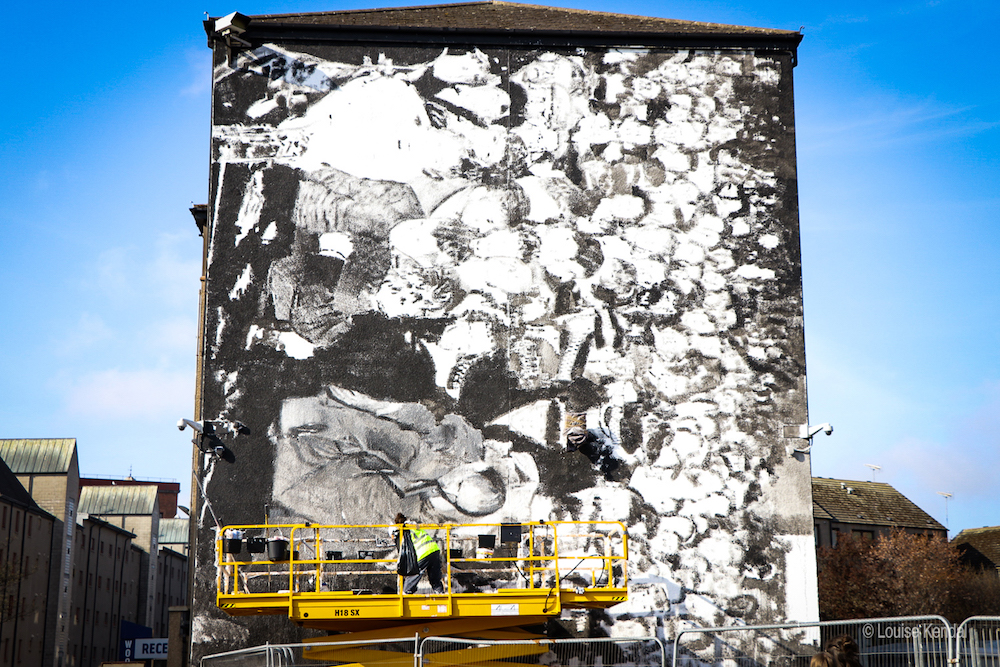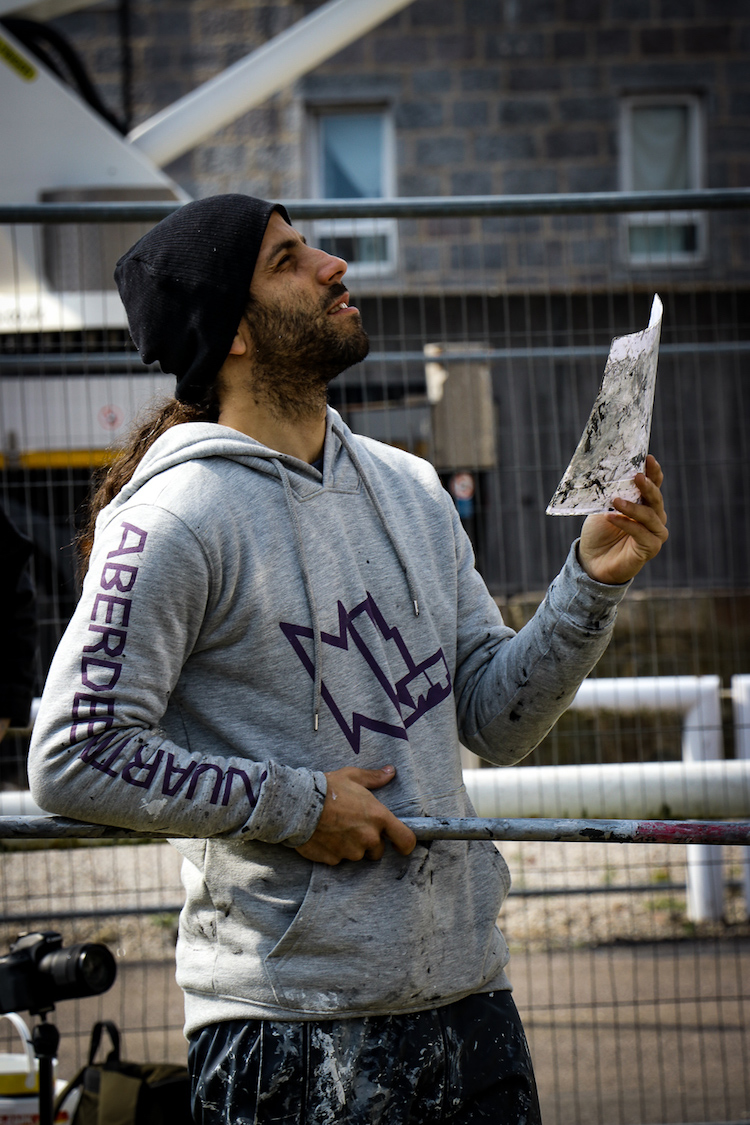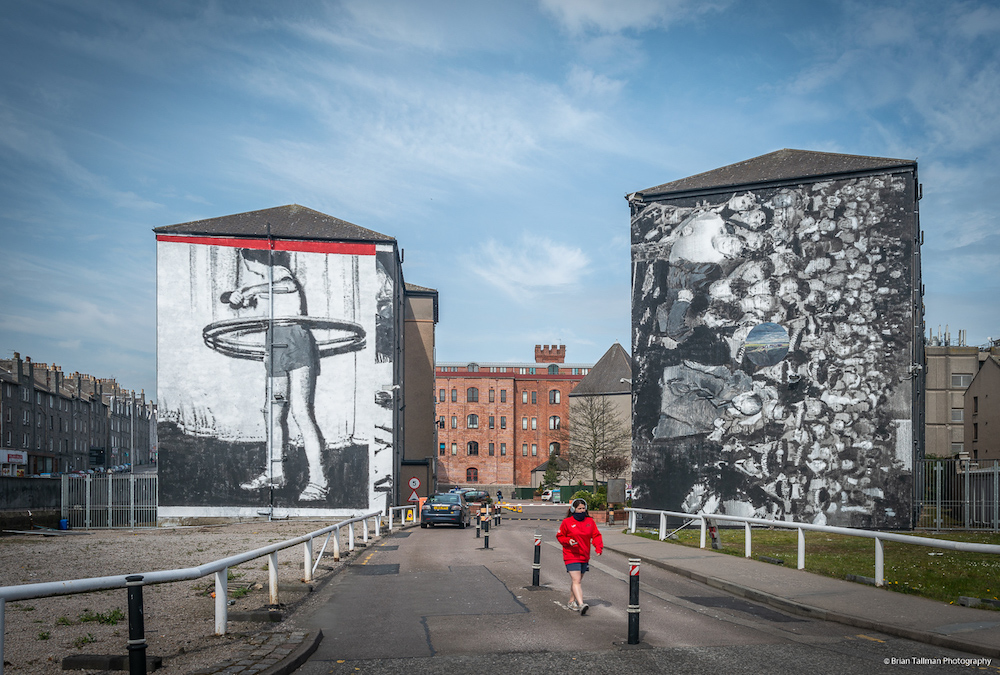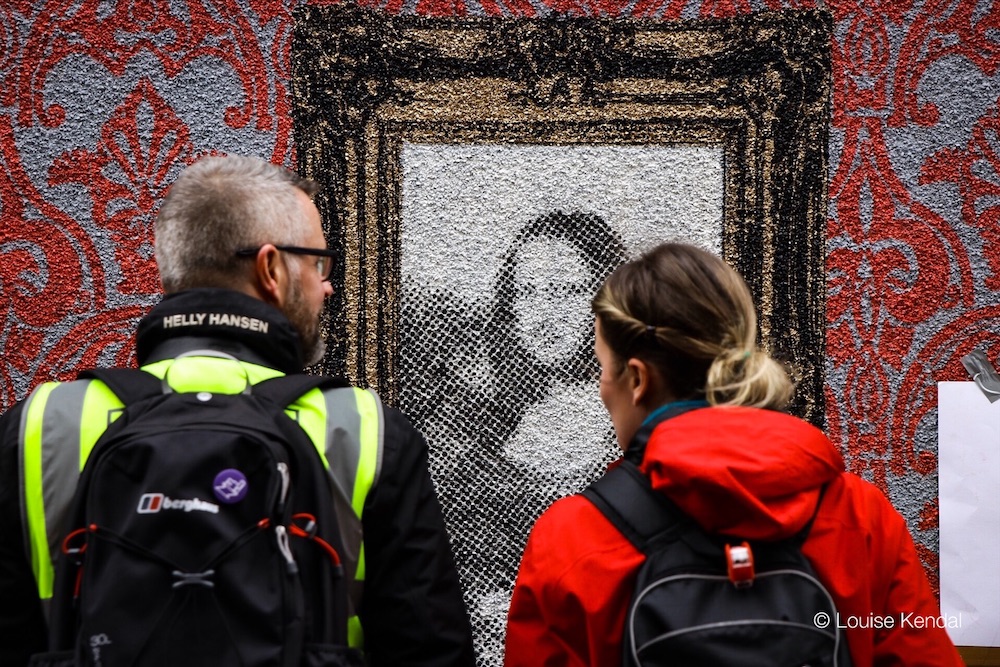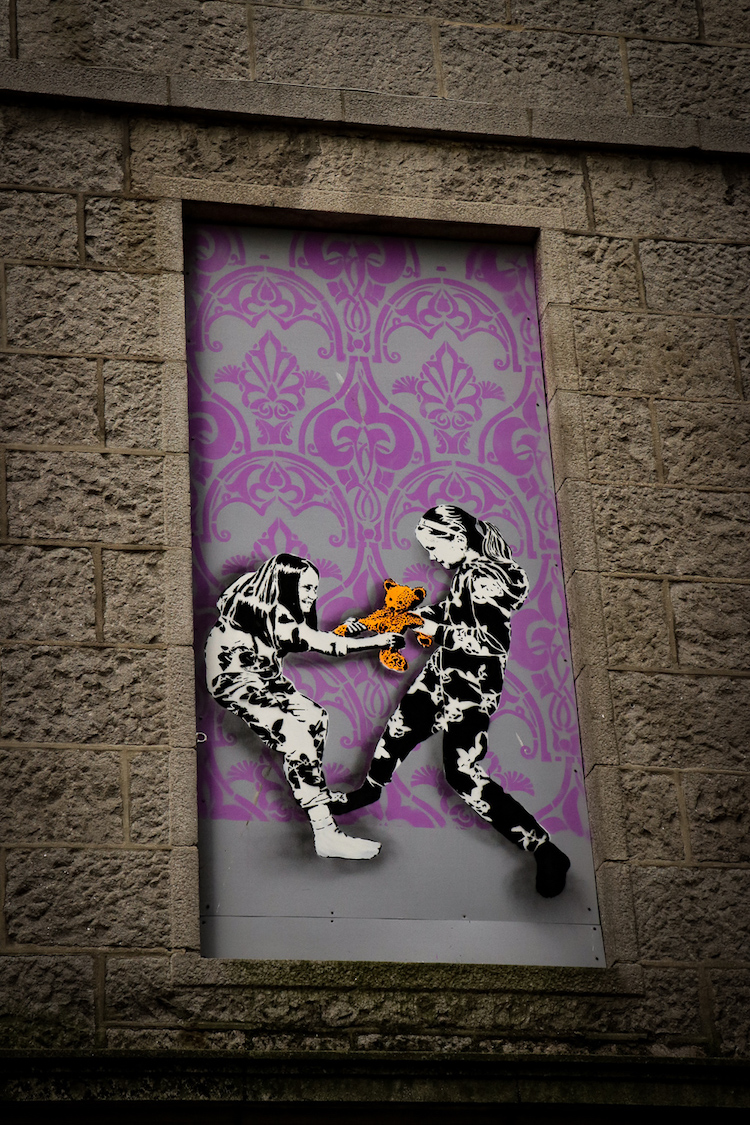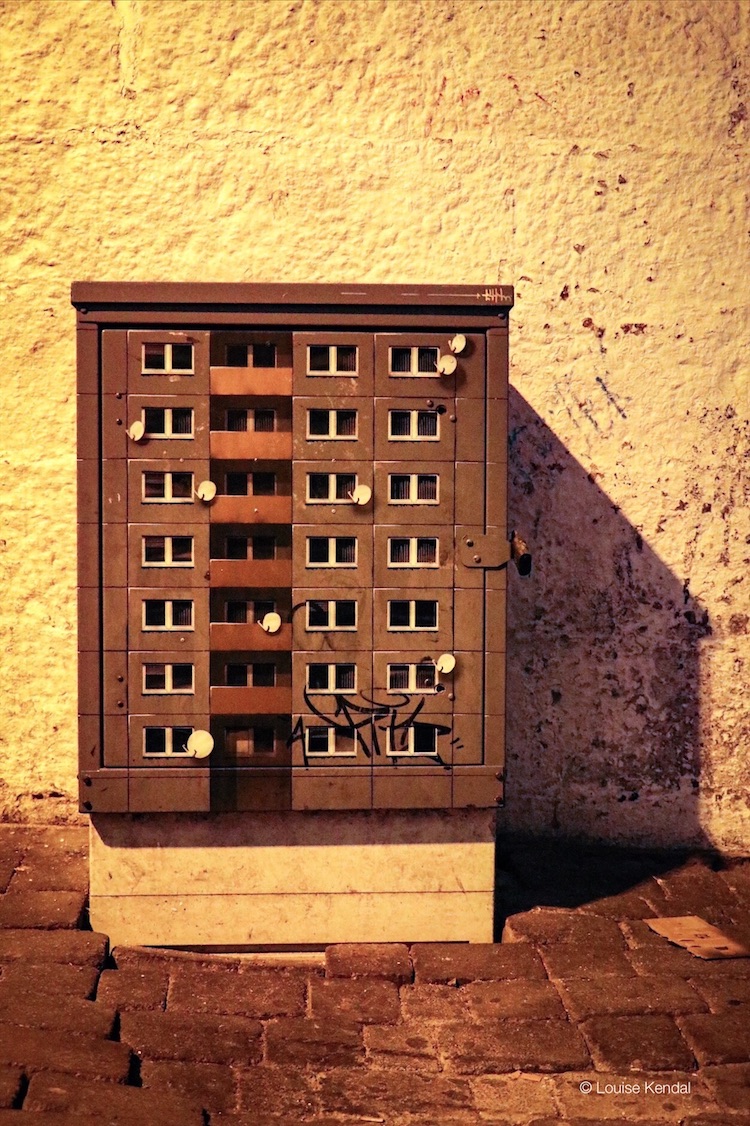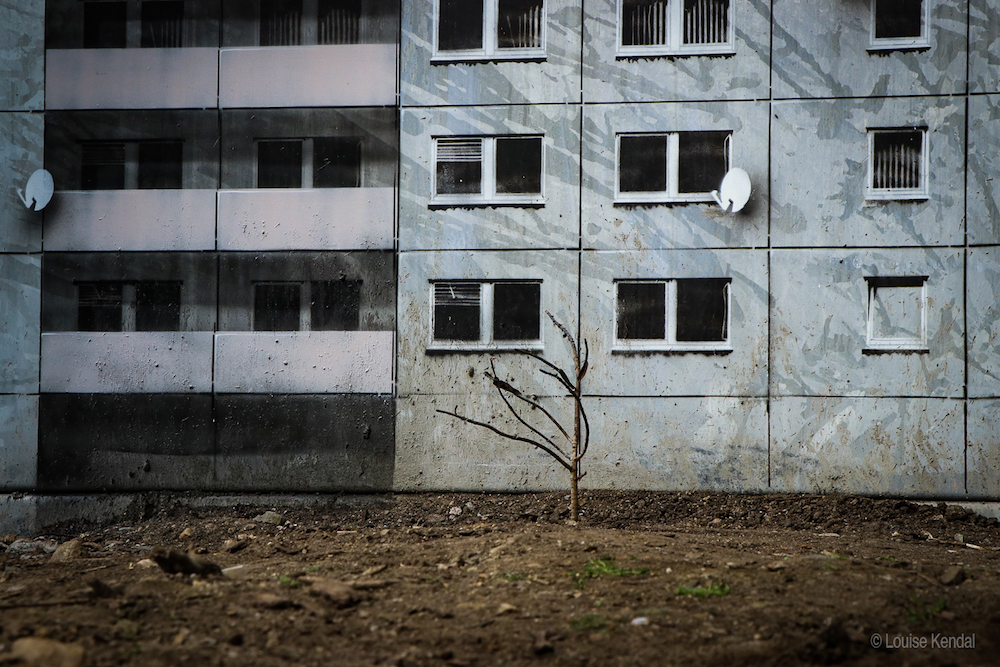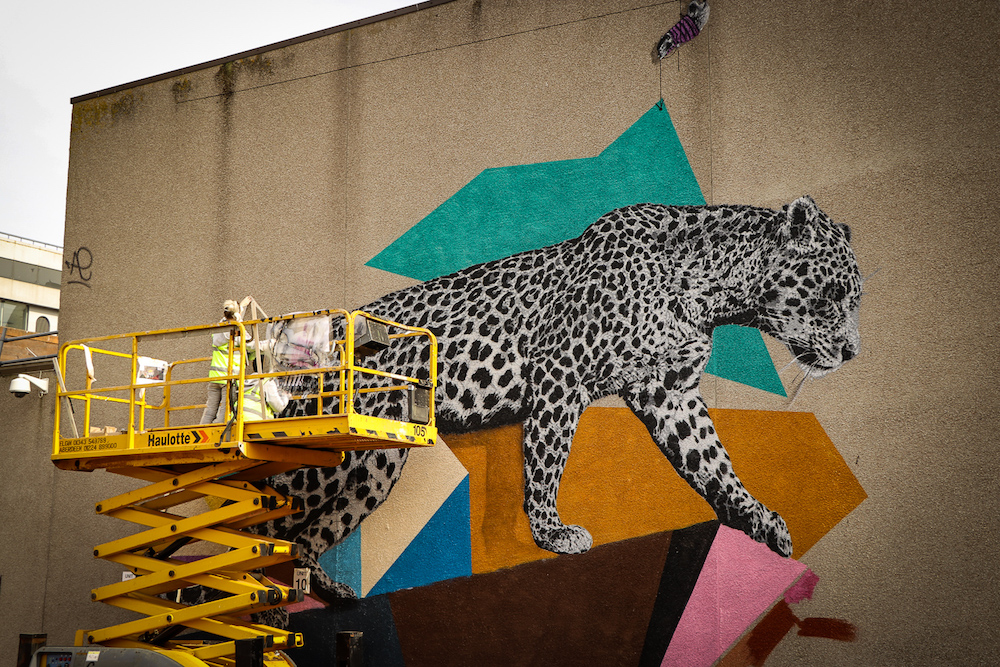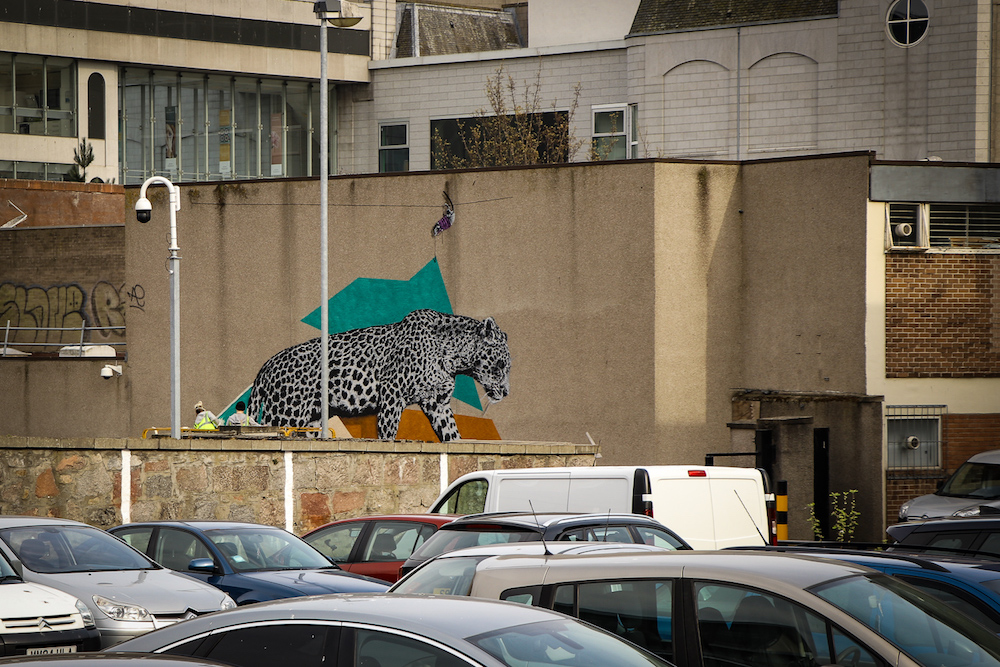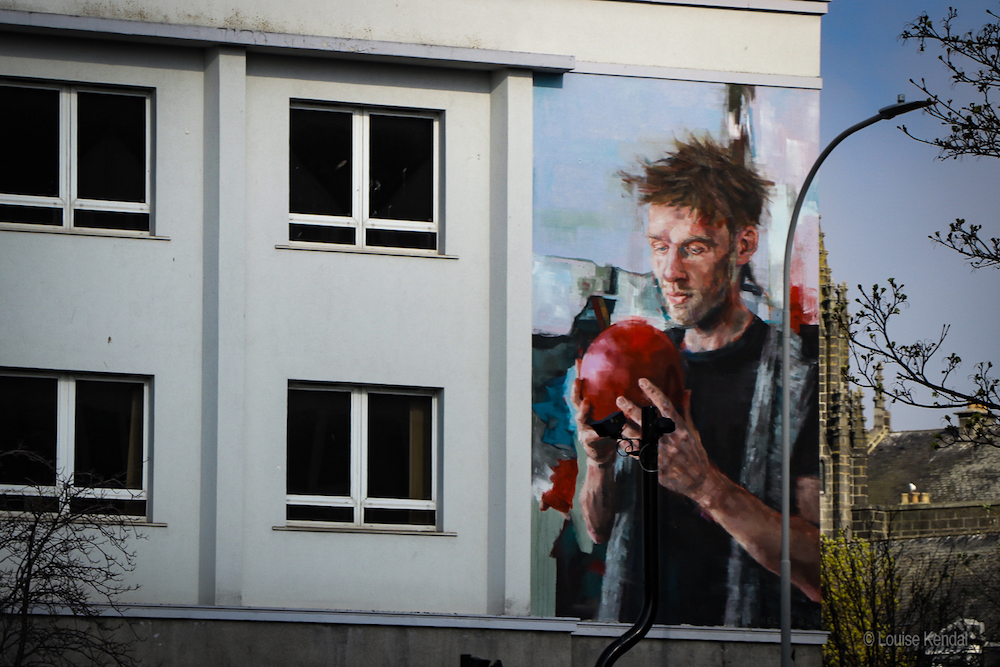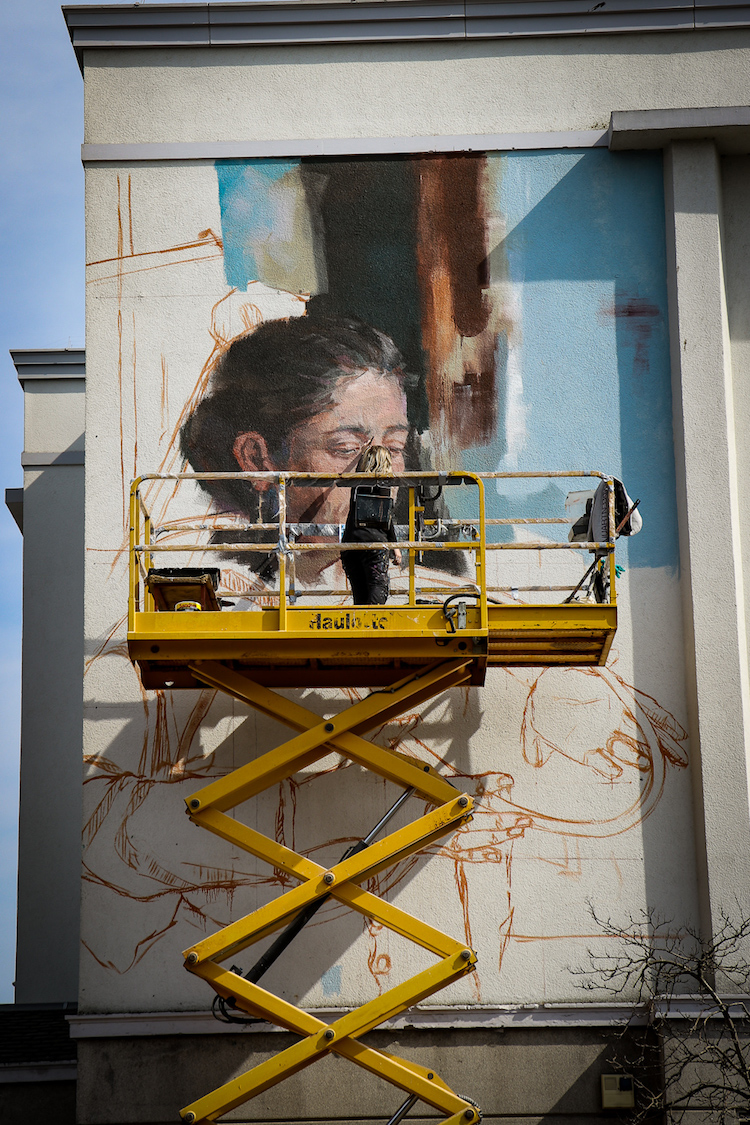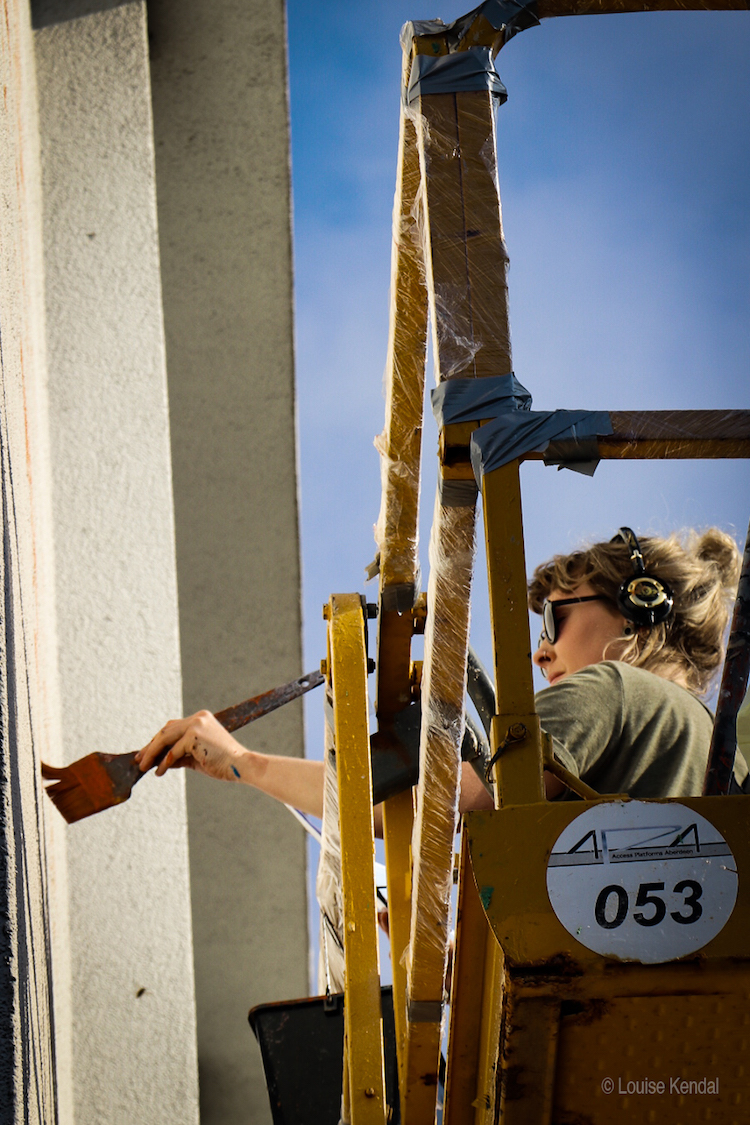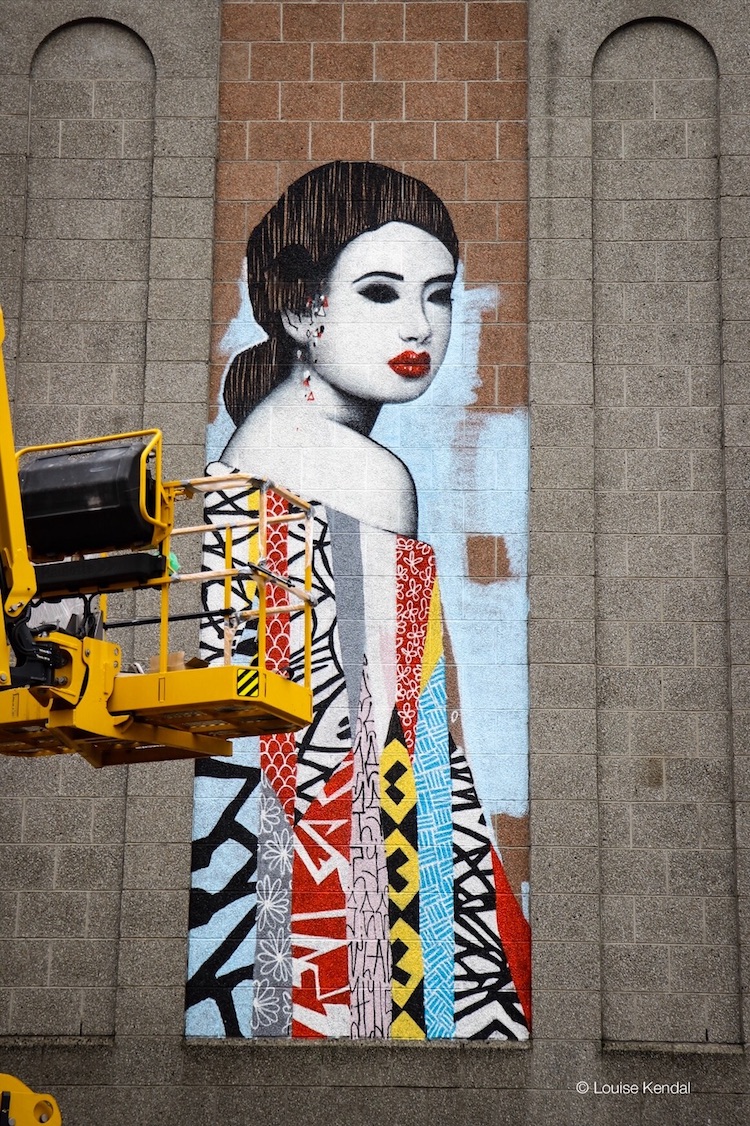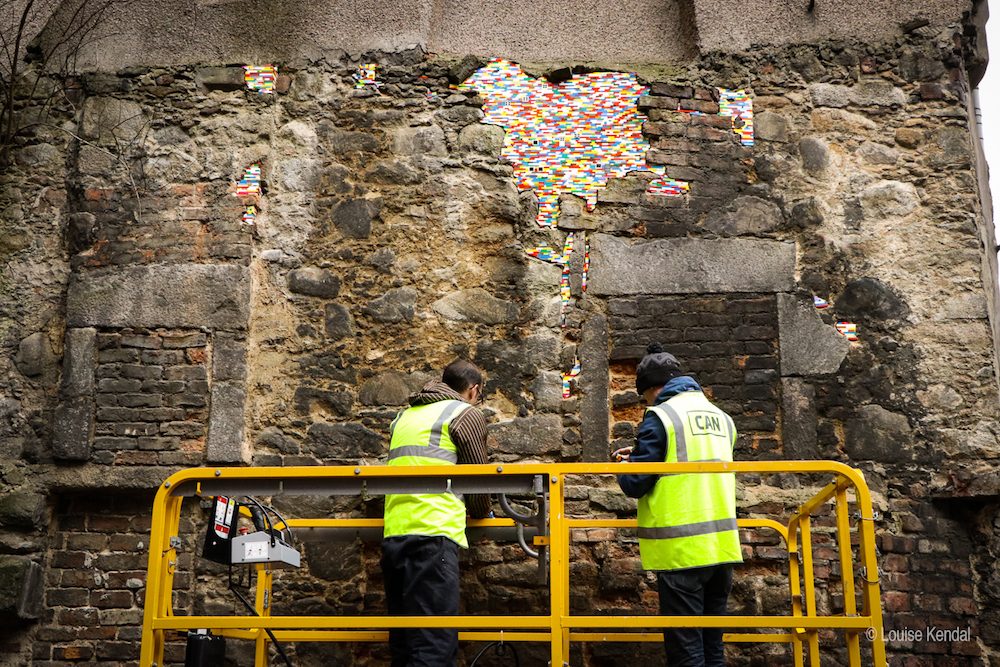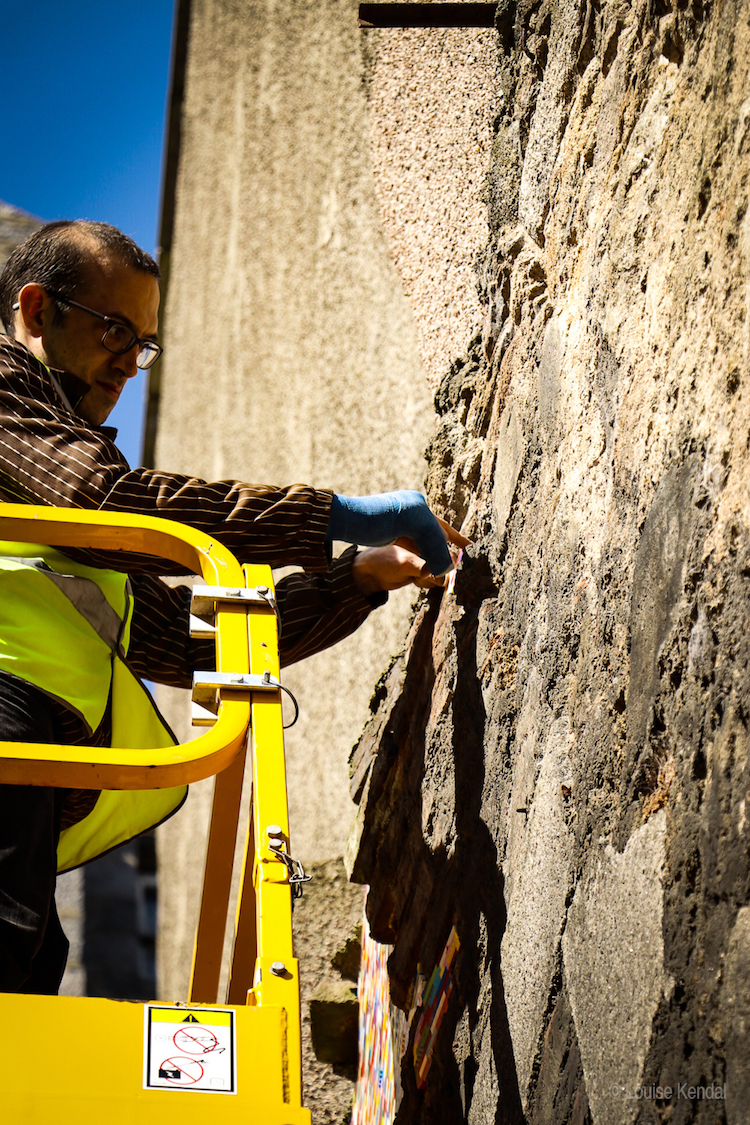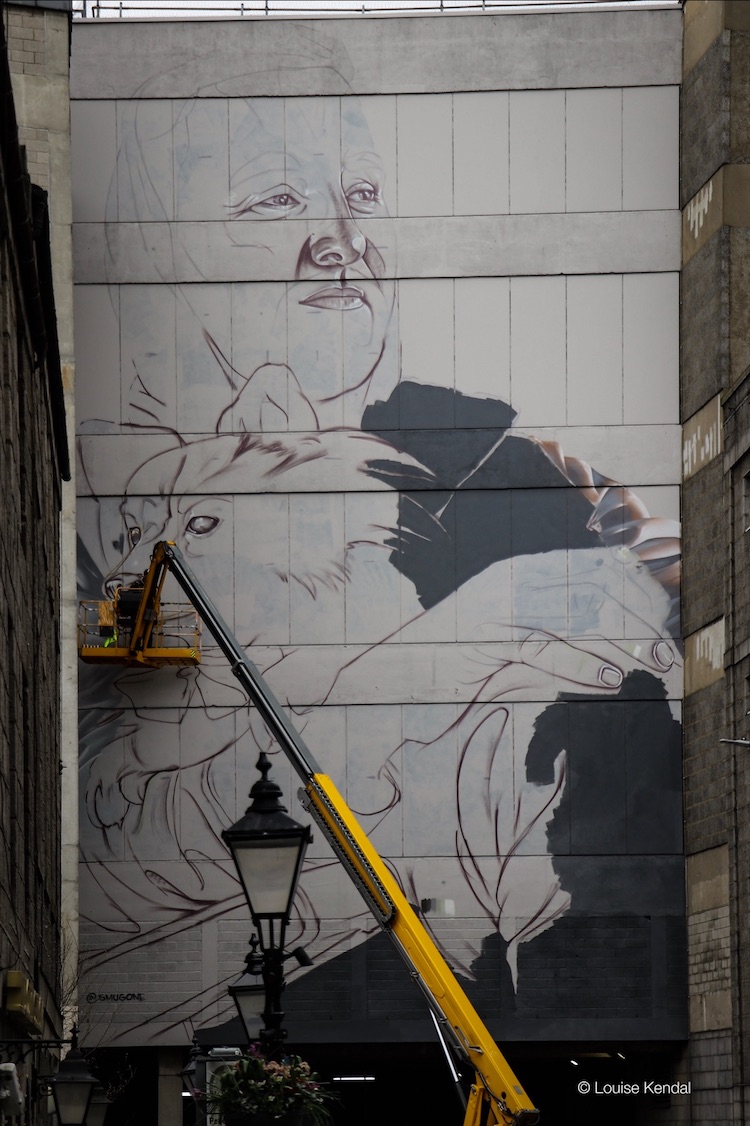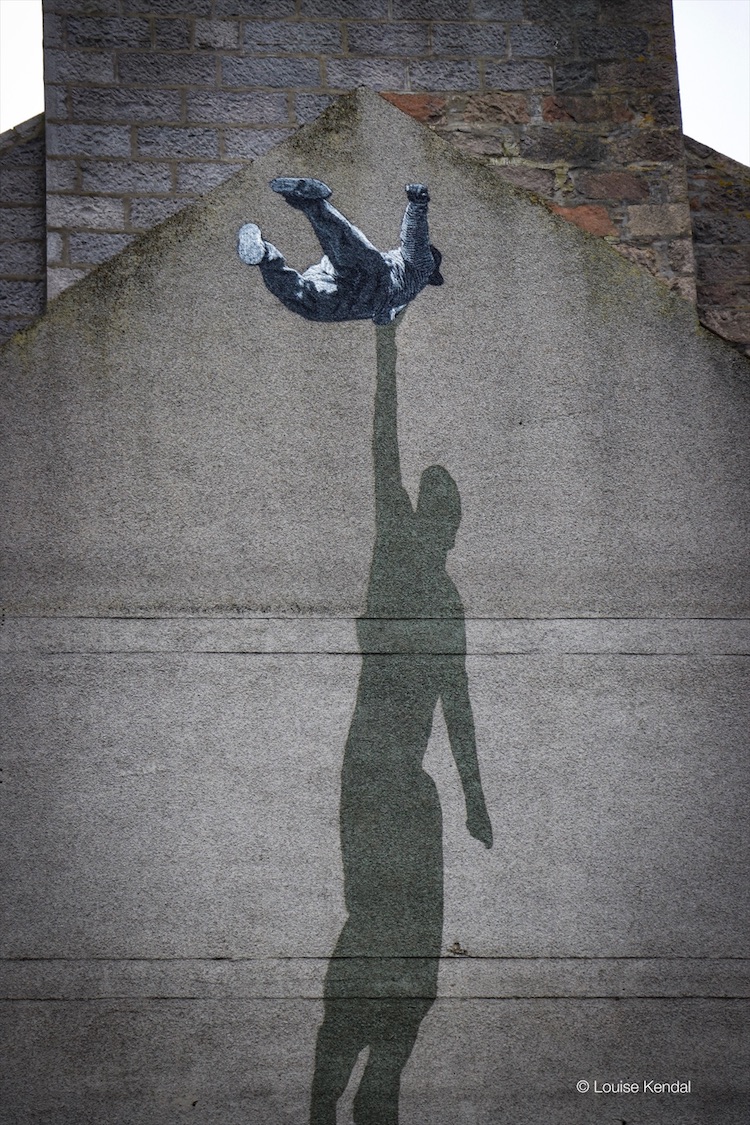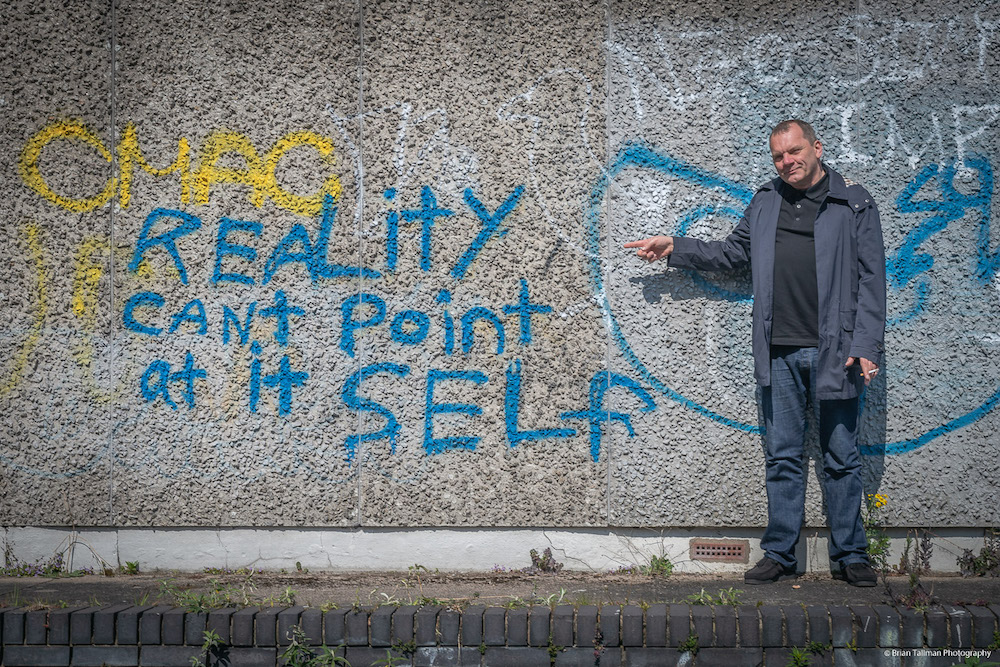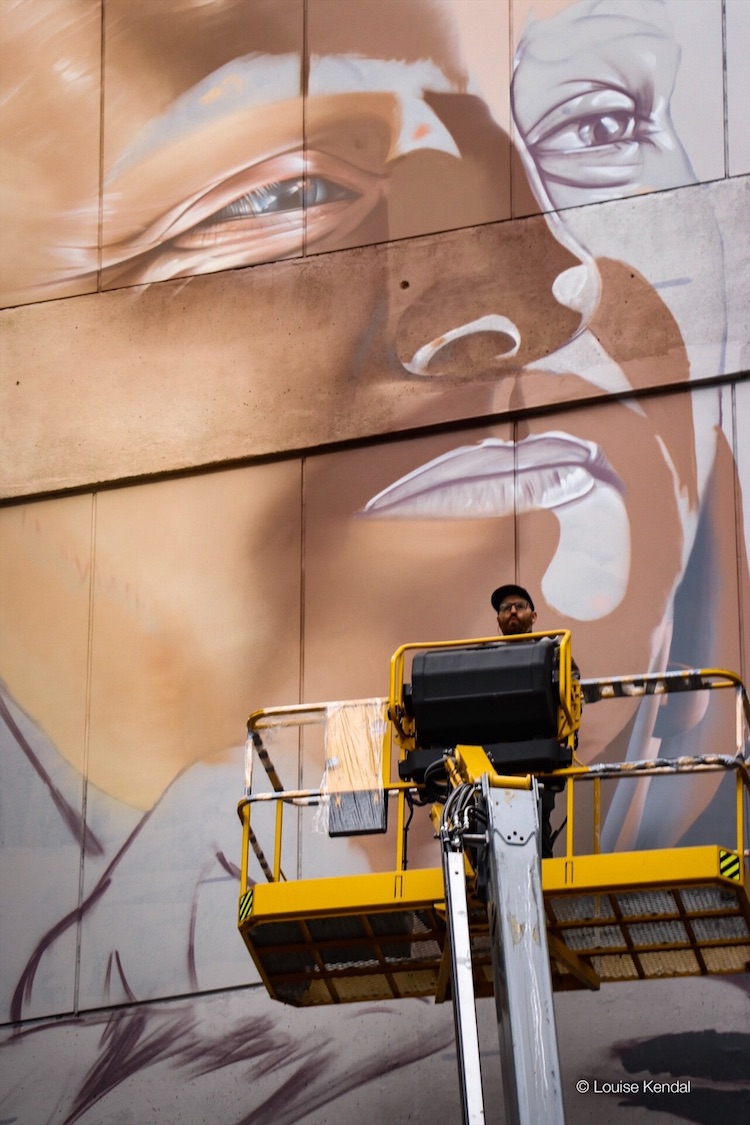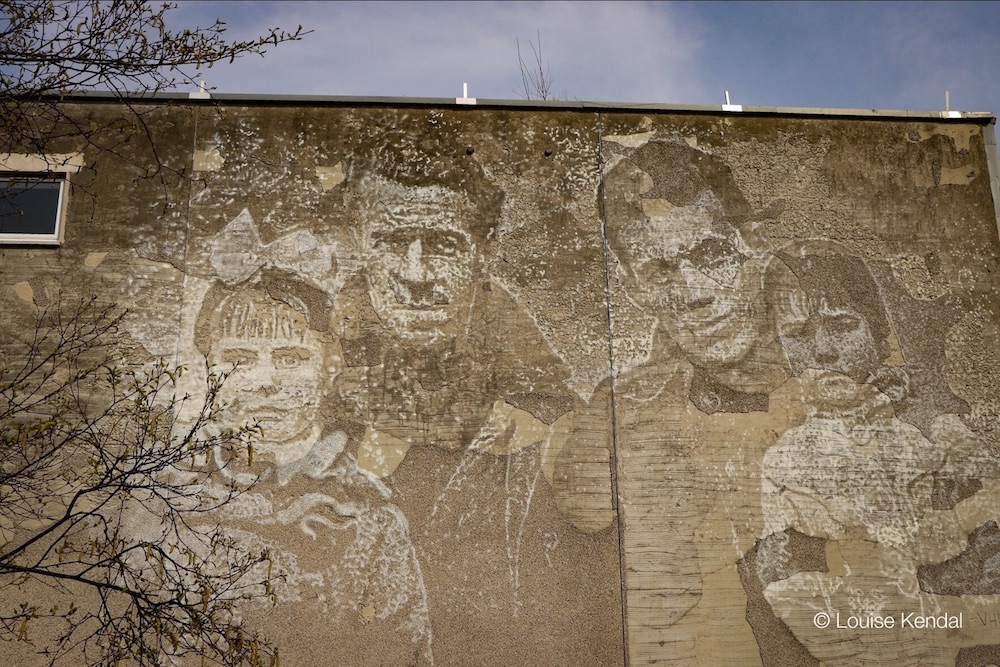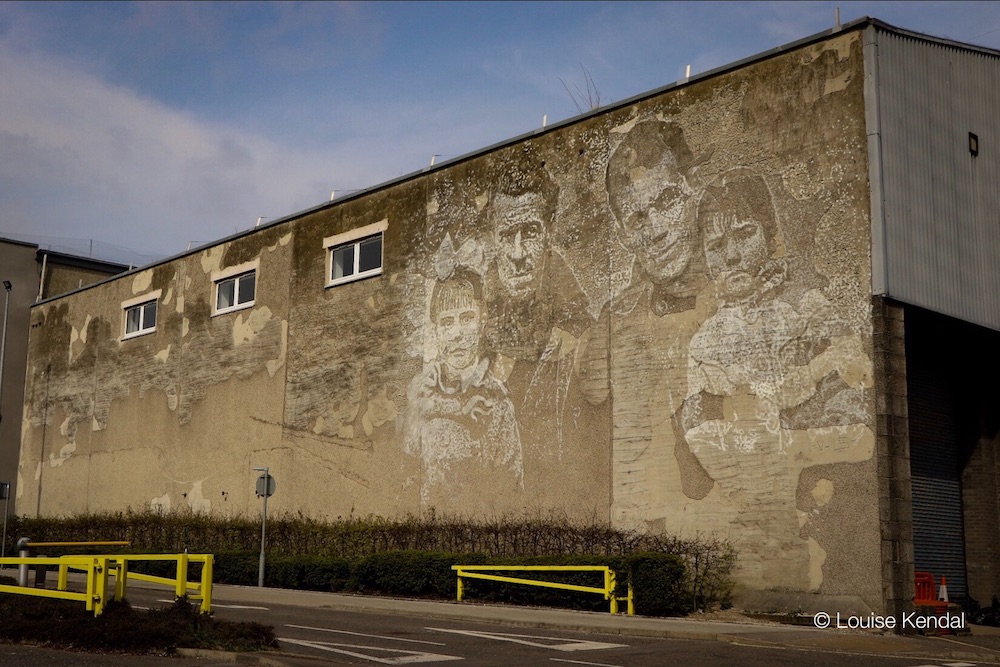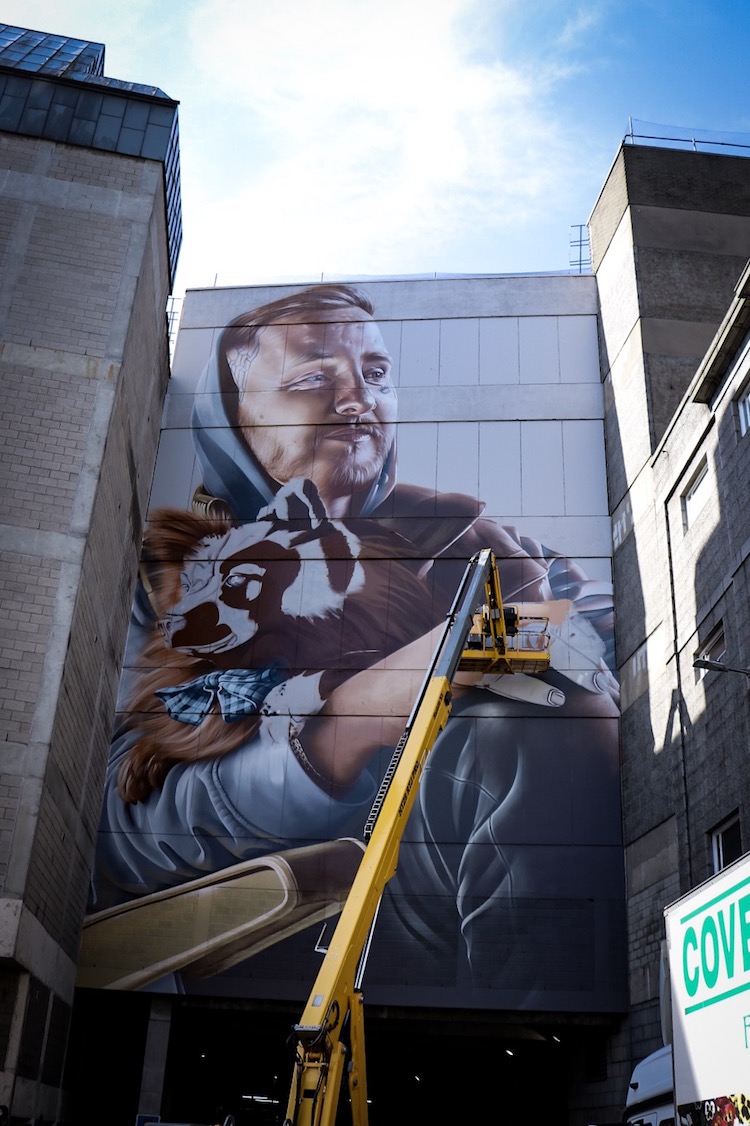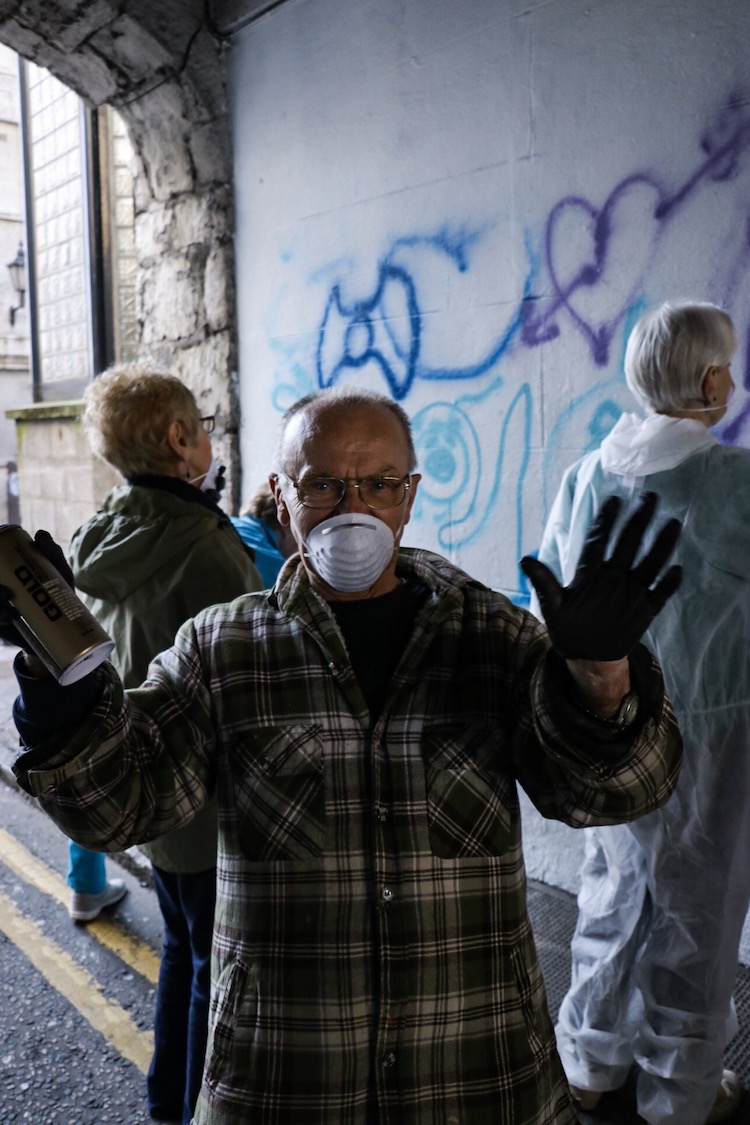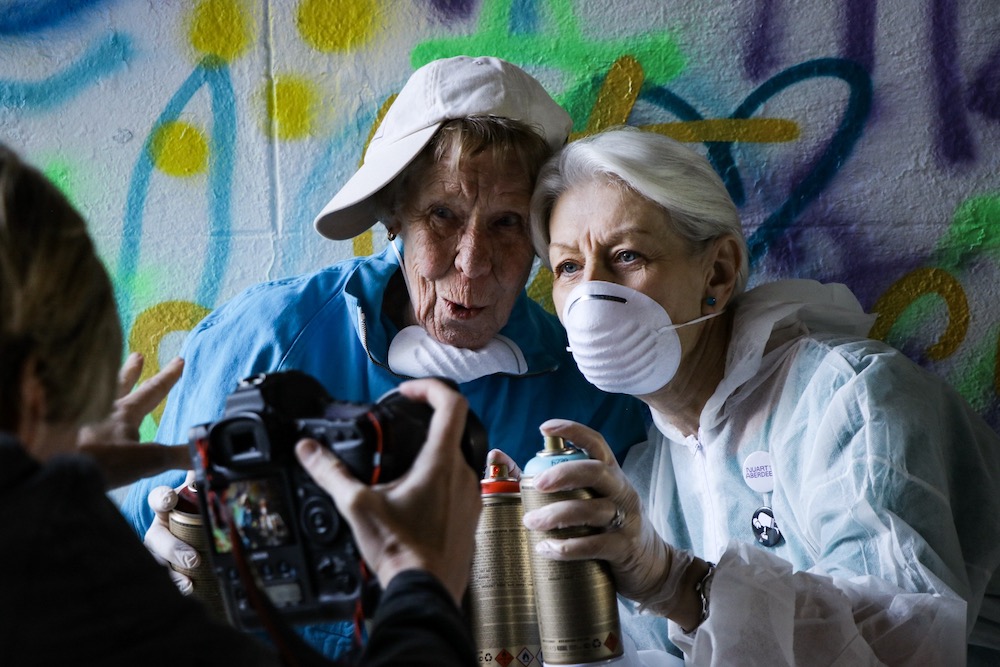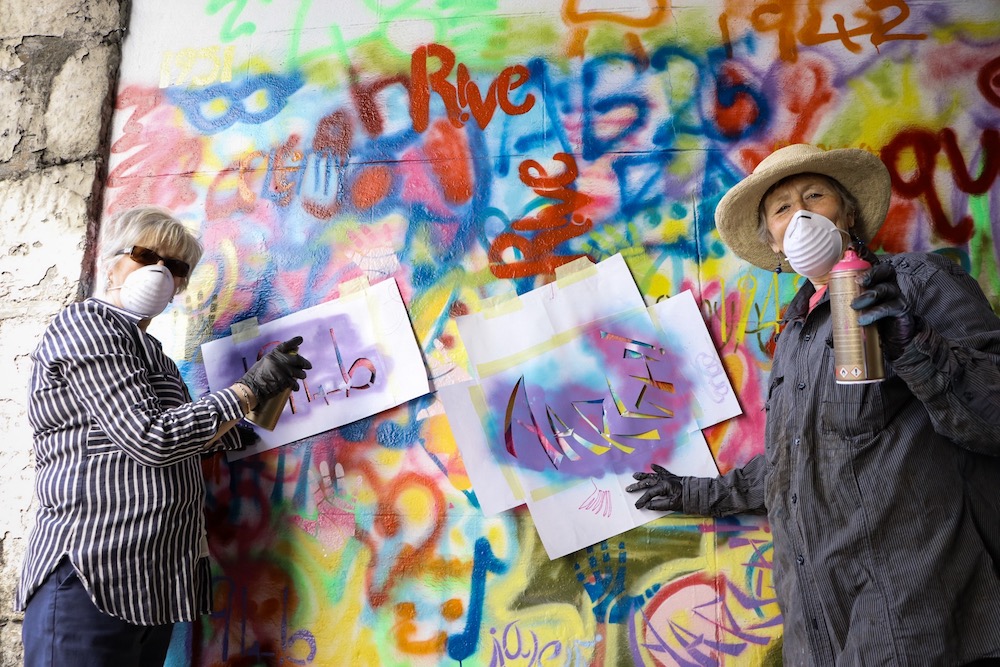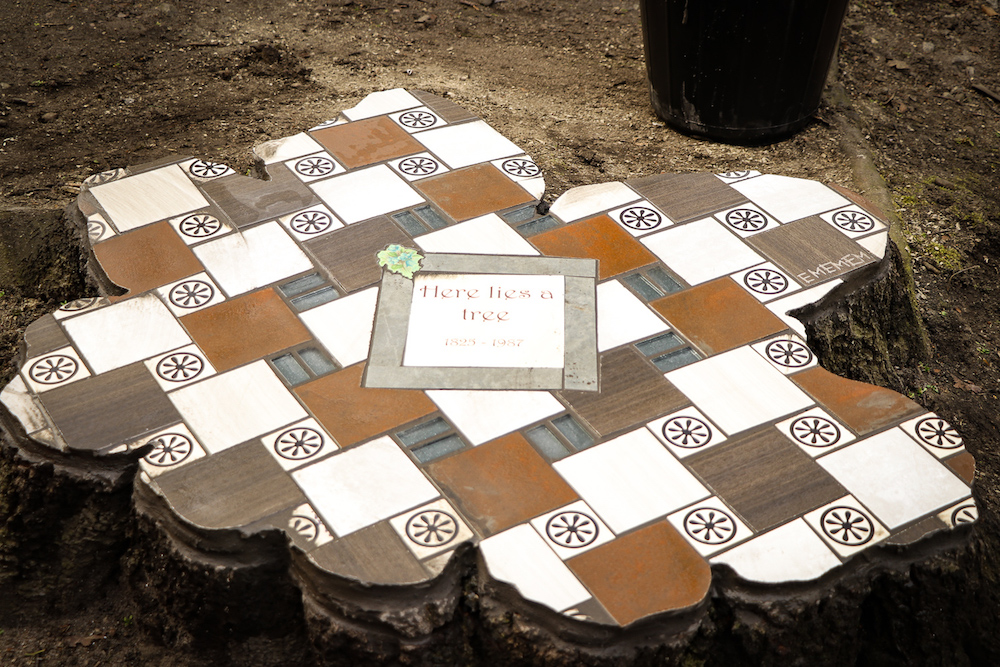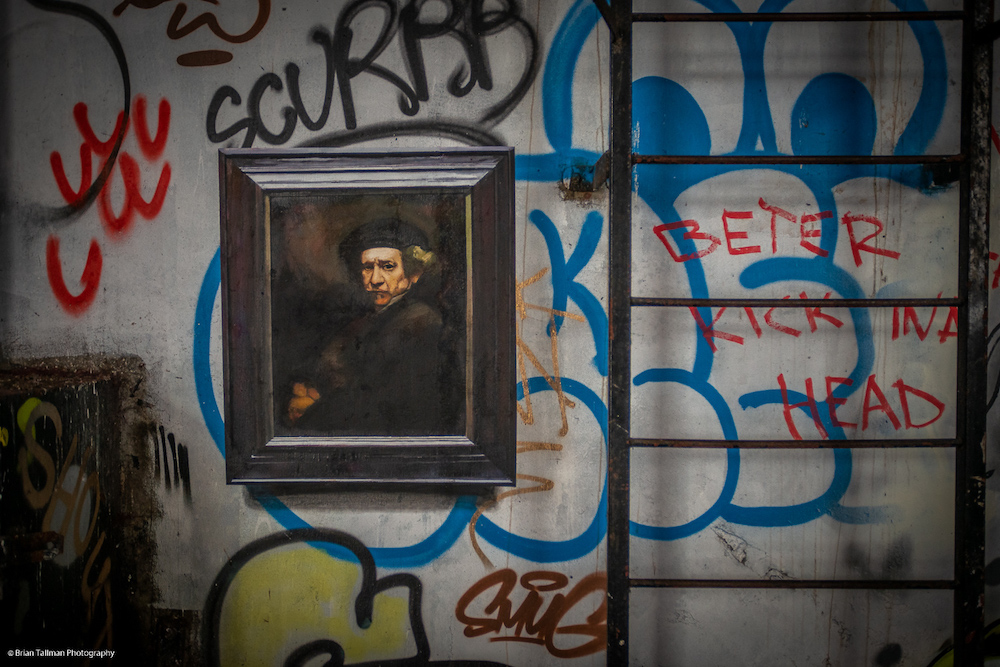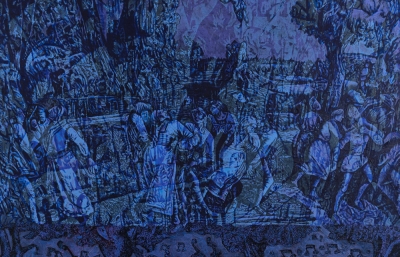On a brisk Thursday afternoon at the end of March in Paris, teams of volunteers diligently cut large swaths of paper into shapes to be wheatpasted on the hallowed grounds of the world’s most famous museum. There was a buzz, laughter, and a collective understanding that what was happening was not only rare, but a piece of history. JR, who was once known as just a street artist and who has quickly become the pioneering artist working in large-scale productions, film and philanthropy, was transforming the base of the Louvre’s famous “pyramid” for a 3-day project celebrating the once controversial structure’s 30th anniversary. The museum could have chosen a myriad of ways to celebrate the occasion; this is the Louvre, after all, a museum so packed with art history may want to go in a more traditional direction with a birthday party. But no, the museum chose collective street art to honor the occasion. In a way, it became a new chapter to the museum itself, a new way of telling its story within the context of its past, present and future. Storytelling for a new millenium.

Street art festivals don’t have the advantage of reimaging their themes just weeks before they kick-off, but its always seems that Nuart founder, Martyn Reed, has a keen sense of what is to come when he curates the Nuart Festival each year in both Stavanger, Norway and Aberdeen, Scotland. Nuart Aberdeen, which saw an international roster of artists and curators descend upon the Scottish seaside city from April 18-21, focused its attention on storytelling this year. Reed has made his festival internationally recognized by not only curating artists around a set idea, but also how those ideas reflect our shared experiences in cities in relation to the arts. The best way of talking about art on the streets is to channel the history of street art, the art we do not curate in white cubes but almost anarchically converse with each other in public space. Even as street art has become a global phenomenon (and when I say this, I mean big muralism and some of art celebrity names that have grown from it), Nuart is dedicated to putting the roots of street art into social practice and protest, and how that history begins to retell as a story of how we live our lives in the present and perhaps the past we have yet to fully include in our lifetime of stories.
The reason I find this so interesting, whether thinking about JR’s massive Louvre work or Axel Void’s brilliant murals in Aberdeen this year or hidden stencils by Evol I found around town, is that no matter where we live in the world in 2019, there has been a collective theme of trying to understand the way we reached these tumultuous times. Brexit, Trump, Sri Lanka, the list goes on. How did we get here? How do our stories get told? And when the “winners” tell their version of history, who do they leave out of the record books? Fine artworks in the same way. The biggest sellers make it into our history books, the dominant cultures dominate the museums. This isn’t a critique, just an understanding. And I really do believe that street art, even in its mere act of being placed into public view, illegally or curated, is a way of changing the way we look at art history. It changes the conversation. 
One of the highlights of Nuart Aberdeen is always the Nuart Plus programming, where academics, curators, and artists discuss their field and its intersection with the festival’s theme. Jeff Ferrell, a Sociology professor at TCU in Texas, gave the penultimate presentation of the festival on the topic of “dumpster diving” and found photography. In his own practice, he has found volumes of discarded photographs, many times constructing alternative histories for what he has come across, and re-purposed them for gallery exhibitions. Ferrell writes of found photography in the new Nuart Journal, “Collectively, they produce a dislocated history of visible ghosts and invisible intentions, a disorientating derive through other lives, other times, and other places. They build yet another city within the city, this one pieced together from image, loss, memory and imagination.” 
This is where I think the idea of storytelling and the memories we are told to remember can be remixed and reimagined. When Axel Void paints a mural of a crowd awaiting the arrival of the Queen to Aberdeen, based on an archived photo from decades past, our history is altered away from the iconic woman we all know to the actual participants of our own lives. Our aunts and uncles in the crowd, the people who fill our past. When Vhils etches a mural on the side of a seaside building of Spanish immigrants who stayed in Aberdeen in the 1930s after a labor dispute back home, it tells of a new history not commonly known. When Helen Bur paints her “little people” below our eye line, or Ememem does a tile intervention in an old pothole, these acts enlighten our city and make us feel something new about a place we are all too familiar with. They may seem like little acts, but refreshing our sense of place is a powerful gesture, one that empowers all of us to just think more energetically and compassionately about the world around us.
This isn’t a proclamation that street art can change the world. That is a bit silly and naive. But what I do think, and what I think Nuart Aberdeen is doing, is showing that stories can be found everywhere, and our history can be written by anyone and not just the winners of a distant past. Street art can be a reengagement into the cities and cultures we live in, and that is probably a good place to start. —Evan Pricco
All photography by Louise Kendal except otherwise noted with photos by Brian Tallman


